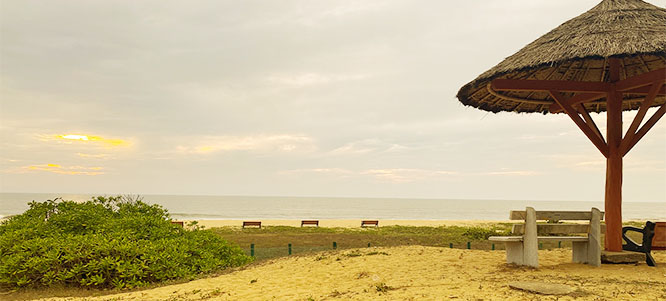
As Americans grapple with problems of racism and power, a newly declassified trove of White House tapes provides startling evidence of the bigotry voiced by President Richard M Nixon and Henry Kissinger, his national security adviser.
The full content of these tapes reveal how US policy toward South Asia under Mr. Nixon was influenced by his hatred of, and sexual repulsion toward, Indians.
These new tapes are about one of the grimmest episodes of the Cold War, which brought ruin to Bangladesh in 1971. At that time, India tilted heavily toward the Soviet Union while a military dictatorship in Pakistan backed the United States. Pakistan flanked India on two sides: West Pakistan and the more populous, and mostly Bengali, East Pakistan.
In March 1971, after Bengali nationalists won a democratic election in Pakistan, the junta began a devastating crackdown on its own Bengali citizens.
Mr. Nixon and Mr. Kissinger staunchly supported the military regime in Pakistan as it killed hundreds of thousands of Bengalis, with 10 million refugees fleeing into neighbouring India. New Delhi secretly trained and armed Bengali guerrillas. The crisis culminated in December 1971 when India defeated Pakistan in a short war that resulted in the creation of an independent Bangladesh.
I documented the violent birth of Bangladesh and the disgraceful White House diplomacy around it in my book The Blood Telegram, published in 2013. Much of my evidence came from scores of White House tapes, which reveal Mr. Nixon and Mr. Kissinger as they really operated behind closed doors. Yet many tapes still had long bleeps.
In December 2012, I filed a legal request for a mandatory declassification review with the Richard Nixon Presidential Library and Museum. After considerable wrangling, the Nixon archivists at last released a few unbleeped tapes in May 2018 and July 2019, then 28 more in batches from October 2019 to this past May. (There are bleeps still remaining on a couple of the reviewed tapes, some of which I am appealing.)
It was stunning to hear a conversation between Mr. Nixon, Mr. Kissinger and H.R. Haldeman, the White House chief of staff, in the Oval Office in June 1971.
“Undoubtedly the most unattractive women in the world are the Indian women,” said Mr. Nixon. “Undoubtedly,” he repeated, with a venomous tone.
He continued, “The most sexless, nothing, these people. I mean, people say, what about the Black Africans? Well, you can see something, the vitality there, I mean they have a little animallike charm, but God, those Indians, ack, pathetic. Uch.”
On Nov. 4, 1971, during a private break from a contentious White House summit with Prime Minister Indira Gandhi of India — a rare woman leader at the time — the president harangued Mr. Kissinger about his sexual disgust at Indians.
Mr. Nixon said: “To me, they turn me off. How the hell do they turn other people on, Henry? Tell me.” Mr. Kissinger’s response is inaudible, but it did not discourage the president from his theme.
The president, in between bitter sparring matches with Mrs. Gandhi about the danger of war with Pakistan, suggested to Mr. Kissinger that his own sexual neuroses were having an impact on foreign policy: “They turn me off. They are repulsive and it’s just easy to be tough with them.”
A few days later, on November 12, 1971, in the middle of a discussion about India-Pakistan tensions with Mr. Kissinger and Secretary of State William P. Rogers, after Mr. Rogers mentioned reprimanding Mrs. Gandhi, the president blurted, “I don’t know how they reproduce!”
Mr. Kissinger has portrayed himself as above the racism of the Nixon White House, but the tapes show him joining in the bigotry, though the tapes cannot determine whether he truly shared the president’s prejudices or was just pandering to him.
On June 3, 1971, Mr. Kissinger was indignant at the Indians, while the country was sheltering millions of traumatised Bengali refugees who had fled the Pakistan army. He blamed the Indians for causing the refugee flow, apparently by their covert sponsorship of the Bengali insurgency. He then condemned Indians as a whole, his voice oozing with contempt, “They are a scavenging people.”
On June 17, 1971 — in the same conversation as Mr. Nixon’s outburst at “sexless” Indian women — the president was furious at Kenneth B. Keating, his ambassador to India, who two days earlier had confronted Mr. Nixon and Mr. Kissinger in the Oval Office, calling Pakistan’s crackdown “almost entirely a matter of genocide.”
Mr. Nixon now asked what “do the Indians have that takes even a Keating, for Christ, a 70-year-old” — here there is cross-talk, but the word seems to be “bachelor” or “bastard.” In reply, Mr. Kissinger sweepingly explained: “They are superb flatterers, Mr. President. They are masters at flattery. They are masters at subtle flattery. That’s how they survived 600 years. They suck up — their great skill is to suck up to people in key positions.”
Mr. Kissinger voiced prejudices about Pakistanis, too. On August 10, 1971, while discussing with Mr. Nixon whether the Pakistani junta would execute the imprisoned leader of the Bengali nationalists, Mr. Kissinger told the president, “I tell you, the Pakistanis are fine people, but they are primitive in their mental structure.” He added, “They just don’t have the subtlety of the Indians.”
These emotional displays of prejudice help to explain a foreign policy debacle. Mr. Nixon and Mr. Kissinger’s policies toward South Asia in 1971 were not just a moral disaster but a strategic fiasco on their own Cold War terms.
While Mr. Nixon and Mr. Kissinger had some reasons to favour Pakistan, an American ally which was secretly helping to bring about their historic opening to China, their biases and emotions contributed to their excessive support for Pakistan’s murderous dictatorship throughout its atrocities.
As Mr. Kissinger’s own staff members had warned him, this one-sided approach handed India the opportunity to rip Pakistan in half, first by sponsoring the Bengali guerrillas and then with the war in December 1971 — resulting in a Cold War victory for the Soviet camp.
For decades, Mr. Nixon and Mr. Kissinger have portrayed themselves as brilliant practitioners of realpolitik, running a foreign policy that dispassionately served the interests of the United States. But these declassified White House tapes confirm a starkly different picture: racism and misogyny at the highest levels, covered up for decades under ludicrous claims of national security. A fair historical assessment of Mr. Nixon and Mr. Kissinger must include the full truth, unbleeped.







Comments
Some opine that I misquote,or quote out of context.Pakistani and Chinese diplomats are aware of the Gospels of the Wise - but the hoi polloi are not.
Allow me to present the words of the epitome of intellectual genius,in the American Presidency - His Excellency,Richard Nixon.dindooohindoo
Gospel of Nixon - Chapter 1 Verse 1
Nixon also calls Indians “most sexless”, “nothing” and “pathetic”, according to the newly declassified White House tapes
Nixon says to Kissinger “To me, they turn me off. How the hell do they turn other people on, Henry? Tell me.”
May I present the words of Babar the Great in Babarnama "Hindustan is a place of little charm. There is no beauty in its people, no graceful social intercourse, no poetic talent or understanding, no etiquette, nobility or manliness"
I would request the reader to note the similarity between Babar and Nixon !
Gospel of Nixon - Chapter 1 Verse 2
In November 1971, in the middle of a discussion about India-Pakistan tensions with Kissinger and Secretary of State William Rogers, after Rogers mentioned reprimanding Gandhi, the president blurted, “I don’t know how they reproduce!”
Nixon was right.This is Hanooman describing the UNDERSIZED VIRILE MEMBRANE OF RAMA !
Book V : Sundara Kanda –Chapter 35 of the Valmiki Ramayana,Verse 18
“He is undersized at four places (viz. the neck, membran virile, the back and the shanks)"
Seeta Maiya also doubted Rama's virility and sexuality !
Book II : Ayodhya Kanda – Book Of Ayodhya - Chapter 30
किम् त्वा अमन्यत वैदेहः पिता मे मिथिला अधिपः | राम जामातरम् प्राप्य स्त्रियम् पुरुष विग्रहम् || २-३०-३
“What my father, the king of Mithila belonging to the country of Videha, think of himself having got as so-in-law you, a woman having the form of a man?”
May I conclude by quoting the Great Henry Kissinger,as under:
Kissinger had said Indians are “superb flatterers” and “are masters at flattery. They are masters at subtle flattery. That’s how they survived 600 years. They suck up — their great skill is to suck up to people in key positions.”
Rama said the same about the Brahmins who were the Diplomats who were dealing with Kissinger and Nixon !
कच्चिन् न लोकायतिकान् ब्राह्मणामः तात सेवसे |
अनर्थ कुशला ह्य् एते बालाः पण्डित मानिनः || २-१००-३८
38. I hope are not honouring the materialistic brahmins, My dear brother! These men are skilled in perverting the mind, ignorant as they are and thinking themselves to be learned."
धर्म शास्त्रेषु मुख्येषु विद्यमानेषु दुर्बुधाः |
बुद्धिमान् वीक्षिकीम् प्राप्य निरर्थम् प्रवदन्ति ते || २-१००-३९
39. "Reaching to their logical acumen, these men of perverted intellect preach meaninglessly, in the presence of eminent books on righteousness."
Some opine that I misquote,or quote out of context.Pakistani and Chinese diplomats are aware of the Gospels of the Wise - but the hoi polloi are not.
Allow me to present the words of the epitome of intellectual genius,in the American Presidency - His Excellency,Richard Nixon.dindooohindoo
Gospel of Nixon - Chapter 1 Verse 1
Nixon also calls Indians “most sexless”, “nothing” and “pathetic”, according to the newly declassified White House tapes
Nixon says to Kissinger “To me, they turn me off. How the hell do they turn other people on, Henry? Tell me.”
May I present the words of Babar the Great in Babarnama "Hindustan is a place of little charm. There is no beauty in its people, no graceful social intercourse, no poetic talent or understanding, no etiquette, nobility or manliness"
I would request the reader to note the similarity between Babar and Nixon !
Gospel of Nixon - Chapter 1 Verse 2
In November 1971, in the middle of a discussion about India-Pakistan tensions with Kissinger and Secretary of State William Rogers, after Rogers mentioned reprimanding Gandhi, the president blurted, “I don’t know how they reproduce!”
Nixon was right.This is Hanooman describing the UNDERSIZED VIRILE MEMBRANE OF RAMA !
Book V : Sundara Kanda –Chapter 35 of the Valmiki Ramayana,Verse 18
“He is undersized at four places (viz. the neck, membran virile, the back and the shanks)"
Seeta Maiya also doubted Rama's virility and sexuality !
Book II : Ayodhya Kanda – Book Of Ayodhya - Chapter 30
किम् त्वा अमन्यत वैदेहः पिता मे मिथिला अधिपः | राम जामातरम् प्राप्य स्त्रियम् पुरुष विग्रहम् || २-३०-३
“What my father, the king of Mithila belonging to the country of Videha, think of himself having got as so-in-law you, a woman having the form of a man?”
May I conclude by quoting the Great Henry Kissinger,as under:
Kissinger had said Indians are “superb flatterers” and “are masters at flattery. They are masters at subtle flattery. That’s how they survived 600 years. They suck up — their great skill is to suck up to people in key positions.”
Rama said the same about the Brahmins who were the Diplomats who were dealing with Kissinger and Nixon !
कच्चिन् न लोकायतिकान् ब्राह्मणामः तात सेवसे |
अनर्थ कुशला ह्य् एते बालाः पण्डित मानिनः || २-१००-३८
38. I hope are not honouring the materialistic brahmins, My dear brother! These men are skilled in perverting the mind, ignorant as they are and thinking themselves to be learned."
धर्म शास्त्रेषु मुख्येषु विद्यमानेषु दुर्बुधाः |
बुद्धिमान् वीक्षिकीम् प्राप्य निरर्थम् प्रवदन्ति ते || २-१००-३९
39. "Reaching to their logical acumen, these men of perverted intellect preach meaninglessly, in the presence of eminent books on righteousness."
Add new comment